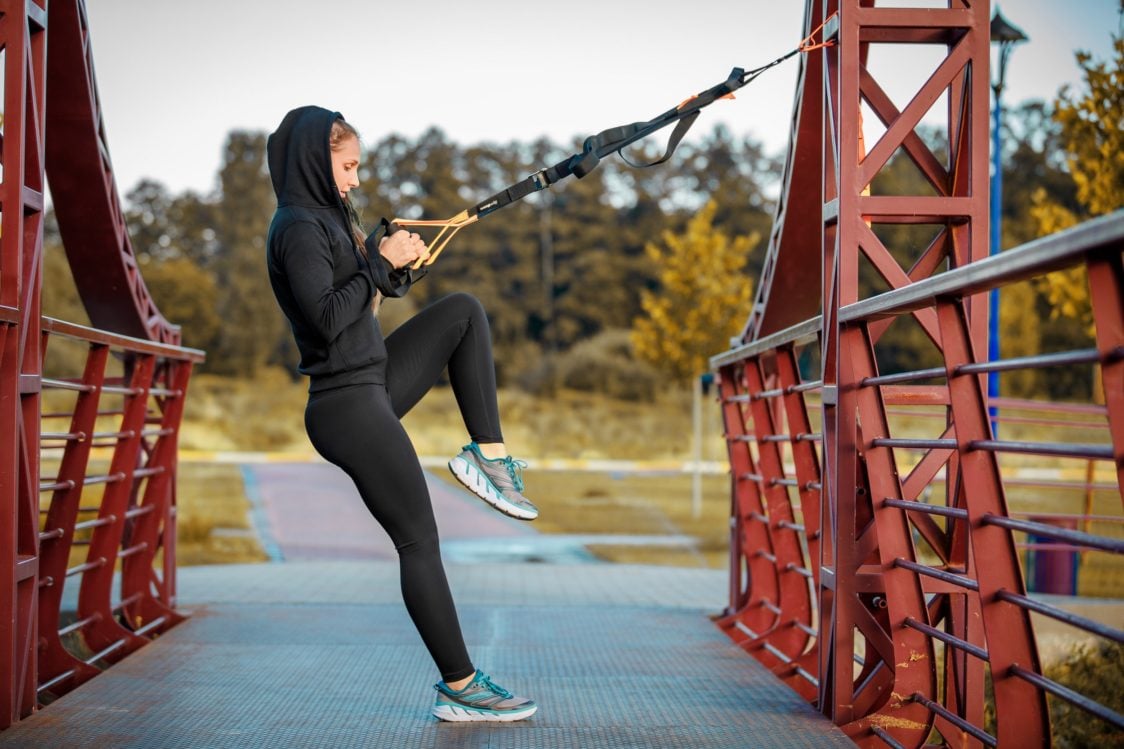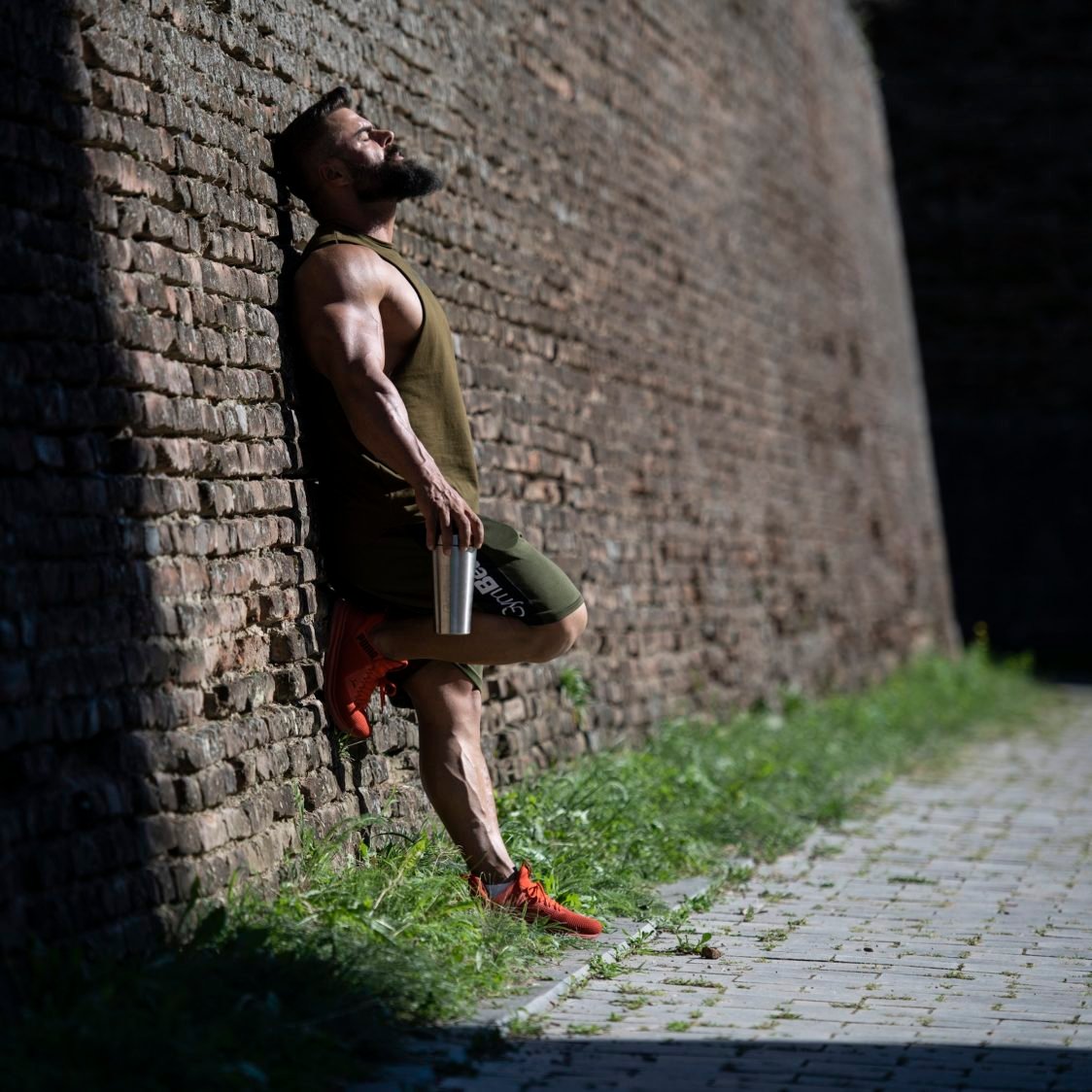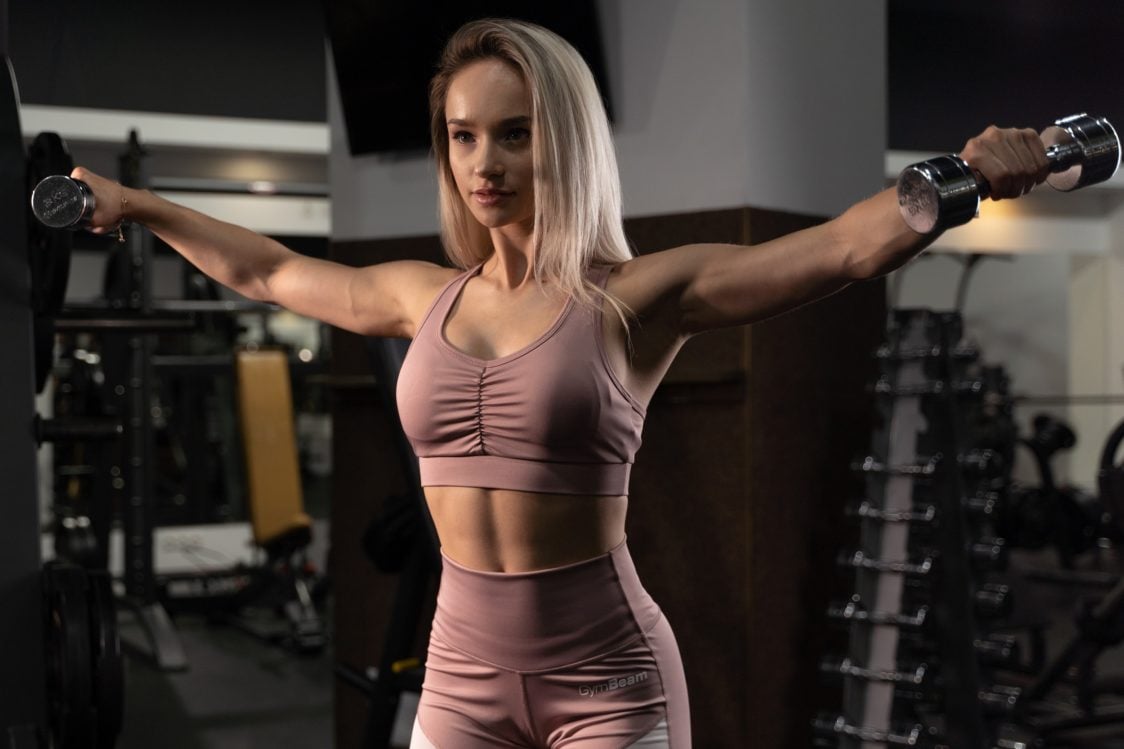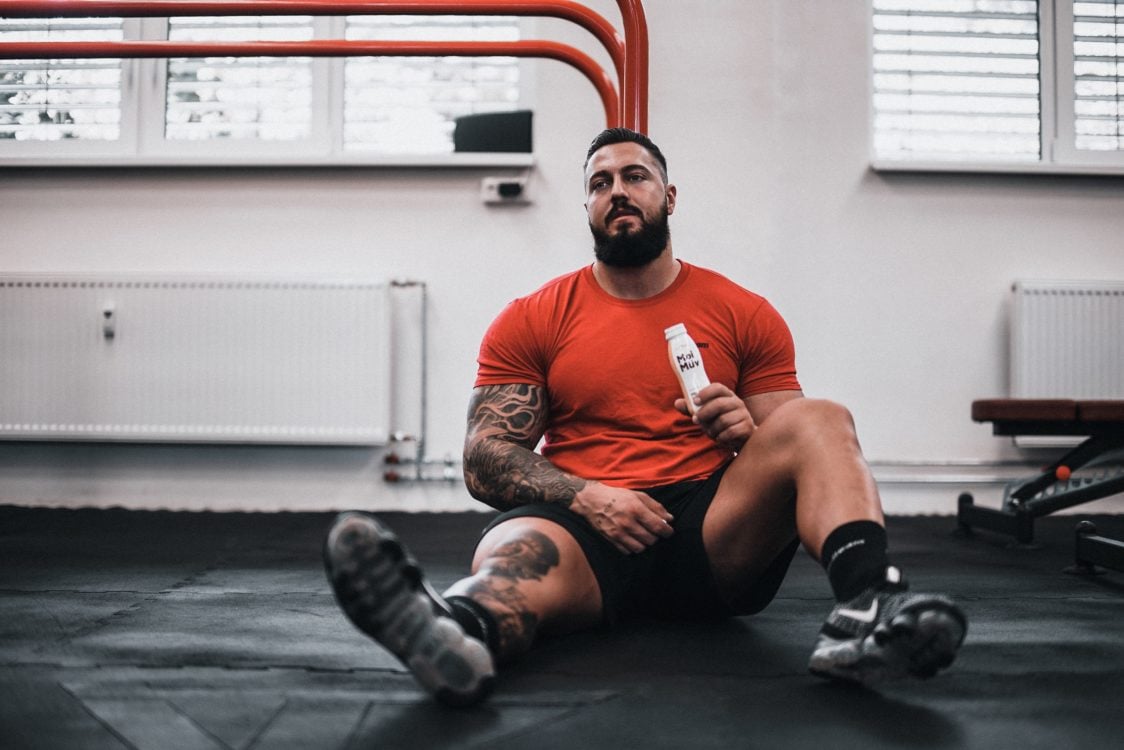Table of Contents
Did it happen to you that the next day after workout you walked like Bambi and while sitting down and getting out of the toilet you had to stick to the wall? Muscle ache or muscle pain is often a delayed consequence of a workout. Many people consider it as a sign of proper workout and with pain comes the satisfaction of progress.
You too may have experienced a discussion like: “well, I destroyed myself yesterday, I can´t even raise my hand.” I think that expected response is not a a regret, but shaking the head and acknowledging. It muscle ache really necessary for progress and muscle growth? Are workouts without it really not insufficient? In the article you will find out everything necessary about factors that influence muscle growth, about delayed muscle pain and its importance for building the muscle mass.
How muscles grow?
Muscle hypertrophy
One of the exceptional features of human body is its adaptability and this also applies for muscles. By changing our lifestyle, muscle tissue has the ability to grow, even though each of us builds muscle differently and at their own pace. Through strength workout, we evoke the need of the body to adapt, which leads to muscle hypertrophy. Hypertrophy is an enlargement of tissue or organ due to the enlargement of its cells. Lifting heavy weights is one of the most common way to get bigger and shapes muscles. There are two types of muscle hypertrophy – myofibrillary and sarcoplasmic. [1] [2]

In myofibrillar hypertrophy, muscle tissue enlarges, more precisely myofibrils – its contraction part. Without it, the movement would not be possible and the effect of myofribrillar hypertropjy increases strength and speed. This is due to an increase of myofibrils in the muscle, which will increase strength and density of the fibers. [2] [3]
The second type of hypertrophy is sarcoplasmic, which increases energy storage and endurance. Between the bundles of muscle tissues, there is a sarcoplasm, a fluid that fills the space between the tissues in the muscles. During sarcoplasmic hypertrophy, the volume of this fluid in the muscles increases. Muscles look bigger, but this type do not cause the growth of tissue or strength. [2] [3]
What affects muscle growth?
The humankind is dealing to answer this question for ages and the knowledge that strength is growing by lifting the heavy weight is already known for ages. If you imagined the Middle age or the 17th century, maybe you will be surprised. Lifting the heavy weights goes much further and one of the “pioneers” was Millon from Croton. His workout would certainly enchant many bodybuilders even today. Millon was ancient wrestler and won the Olympics 6 times in a row. What was his secret? He lifted and carried a newborn calf on his shoulders. He did so for more than 4 years and the calf has grown into an adult ox. Workout with calf was actually strength workout, thanks to the growth of animal, the load also increases, which led to the increase of wrestler´s muscle mass. This story is about 2600 years old and since then the knowledge of muscle function has shifted a lot. [4] [5]
You might be interested in these products:
The process of muscle growth can be divided into three stages – from stimulus to a change in synthesis of muscle proteins. The process is divided into [4]:
- initial stimulus,
- molecular signaling,
- synthesis of muscle proteins.

The second stage is, due to the scientists, molecular signaling, the pathways are activated by workout and apparently, are involved in the increase of synthesis of muscle proteins. The signals result in temporary increase in the rate of protein synthesis in muscles. Simply said, you start to work out and the increased voltage triggers signals that result into higher rate of protein synthesis. When it comes to muscle ache, we are mostly interested in the first point – initial stimulus. [4]
According to scientists, initial stimulus includes 3 factors [4] [6]:
- Mechanical stress
- Metabolic stress
- Muscle damage
During mechanical tension in muscles, there are mechanical changes as well as chemical. The tension is involved in the process of cell signaling, which includes protein abbreviated as mTOR (mechanistic Target of Rapamycin). In the body, mTOR has a functions of reconciling the metabolism and eukaryotic cell growth with the inputs to the environment, such as growth factors and nutrients. [12] [13]
Another factor is metabolic stress, which is involved in the muscle growth due to the production of metabolites in the blood. There are several of them and include creatine, lactate as well as inorganic phosphate. The accumulation of side products might be caused by so-called “cell swelling” – the water increase in muscles. It is another name for intracellular hydration and according to several studies, “swelling” can be controlled by hydration can increase the protein synthesis as well as decrease proteolysis (protein breakdown). [12] [14]
Muscle damage is basically an inflammatory reaction in which several types of white blood cells get into a damaged part of the muscle to take care of unwanted parts. As a result of the release of white blood cells, a process associated with the growth of “satellite cells” is triggered. These are activated by workout and their role is to bind to the muscles, thus supporting the repair and growth of muscle tissues. From this point of view, we can tell that a muscle damage also has a certain effect on muscle growth. [12]

Mechanical stress is workout with weights, when you get muscles under stress and the result of the workout is ultimate muscle damage. Muscle rupture leads to post-workout muscle ache, so to delayed muscle pain (DOMS – Delayed Onset Muscle Soreness). [6]
Post-workout muscle ache and muscle growth
What is DOMS?
The abbreviation DOMS stands for the result of workout or other physical activity, during which the cracks on muscle tissue are formed. According to scientists, delayed muscle pain occurs 12 – 24 hours after workout and peaks on the first up to third day. Each of us has different body and that´s why even the muscle ache has different length. [7] [8]
You have been working out regularly already few months, maybe years and that´s why you do not have muscle ache for some. Does it mean that you do something wrong? DOMS mainly affects two groups of people – beginners and people who changed their workout. You surely remember that at the beginning you had muscle ache regularly and it started to disappear by time. Change of the workout cause change of the tension and also higher adaptive response. By changing the workout, you surprised your muscles that can react by having muscle ache. [8]
As we have already mentioned, post-workout muscle ache can differ. The main symptoms are sore and stiff muscles. They are also symptoms that a person should be careful about such as reduced range of muscle movement, muscle swelling or touch-sensitive muscles. [7] [9]
Do muscles grow after muscle ache?
After the introductory chapters, we are getting to key question – is muscle ache beneficial for muscle growth or it is not related to muscle building? Expectation of having muscle ache at higher weight or intensity can logically trigger the body´s response. On the contrary, during regular workout with the same intensity, the muscle ache does not have to appear at all. The body has a tendency to adapt to increased load. Therefore if you work out regularly for some months, your body will get used to it. Would it make sense to you that with the same weights and workout plan you would have the same muscle ache all the time? [7]

Another important fact is that muscle ache does not affect all muscle parts in the same way. The examples are forearms and deltoid muscles (shoulders), that you can train and typical delayed ache does not have to occur, not even in beginners. It is also confirmed by the study from 2013, in which it was found that muscle ache of deltoid muscles is not the same as those at biceps or legs. You just must have remembered your last leg day and follow-up walk on the stairs. There is probably something about it. [6] [8]

Three different studies from 2010 and 2012 looked up at the the link between muscle ache and muscle growth. The study from 2010 was focused on 20 days intense workout and it resulted into the increase of muscle damage connected with reduced rest. The consequence? It led to a loss of strength. According to the premise of muscles after muscle ache, the result should look the opposite. One of the studies from 2012 states that there was a decrease of muscle activation due to the muscle ache from previous workout. Again, different result. The most interesting conclusion has another study from 2012 that studied functionality of muscle “with muscle ache”. Like the previous mentioned studies, the conclusion is even here probably surprising, because a 50 % decrease in strength was found in examined muscle. There are probably more studies that focus on mentioned or similar topic, but 3 independent sources lead to the same conclusion – muscles do not grow faster after muscle ache. [6]

On the other hand, there is a study from 2010, that states that muscle ache can contribute to muscle growth to some extend. Powerlifters use high weights during the workout and their breaks are longer. On the other hand, there are bodybuilders with average weights and shorter breaks between series. It is not very clear which option is better for muscle hypertrophy, although both types perform well in gaining muscles. As we have already mentioned, in addition to metabolic stress and mechanical pressure, muscle damage during muscle growth is also present. Muscle damage is therefore not an explicit condition for progress in building muscles, because also the workout without muscle ache causes muscle growth. If we should conclude it, “strong muscle ache” does not have to mean high progress in building the muscles, and contrary very little or no muscle ache does not mean slow progress. Muscle ache is also affected by genetics, diet, workout program and regeneration. If your friend is showing off with crazy muscle ache, it does not have to be directly connect with better muscle building. [10] [11]
There are also other evidences about relationship, or better said “non-relationship” between muscles and muscle ache [10]:
- Calves and shoulders and have progress even without crazy muscle ache.
- Irregular workout causes less muscle progress and more muscle ache.
- As the frequency of workout increases, muscle ache decreases, and this can support the muscle growth.

Simply said, muscle ache lasting 2 days does not mean double progress. There is no sense to push each workout, when you can´t pick up the bottle with water or stand up from the chair. Regularity and a reasonable approach toward workout are crucial, because exaggerated ideas can also be the way to injury. Do not have muscle ache? Be happy, others try to get rid of it.
How to get rid off muscle ache?
The goal of several athletes is to work out to feel delayed muscle ache after the workout. Here is also a chapter for those you have muscle ache regularly and they would appreciate tips how to get rid of it. We have chosen several tips and trick, from conventional to non-traditional to support reduction of muscle ache [7] [15] [16]:
- Hydration – drinking water before, during and after the workout has, according to a study, affected men working out in hot and humid environment. Whether you prefer air-conditioned gym or run in the park, fluids can help you to get rid of muscle ache.
- Massage– according to study from 2012 “post-workout” massage works effectively against muscle ache. In addition, it helps to support the repair and functioning of cells. Recently, also massage roller has belong to the most popular massage equipment. It is a great and undemanding way of automassage, thanks to which you will support the reduction of muscle swelling and muscle healing. Do not be put off by the pain during the massage and give it a try after a workout.
- Coffee – the positive effect of coffee to muscle ache has been proven by several studies. The results of one of them even declare 48 % decrease of delayed muscle pain. In addition, you may be approach by other benefit of caffeine, which is its analgetic features.
- Cherries – whether fresh or in the form of juice, cherries contain antioxidants and anti-flammatory substances. Try to drink cherry juice for few days as “anti-muscle ache treatment”.
- Do not overdo it – this tip may sound vague, but significant changes in workout are often reason of painful muscle ache. Increase the intensity of workout gradually so you can better prevent delayed muscle pain, but at the same time you will increase the safety during workout. Ego lifting is not a myth, building muscles and strength is also about patience.
Are you wondering how to best regenerate your body and get rid of muscle ache? You will find everything important in our article – The best techniques of regeneration, reduction of muscle ache and fatigue after the workout.

If we hold “forth”, muscle ache has a certain effect on muscle growth. However, it is certainly not a case that longer the muscle ache, bigger the muscles. Try to look at it as natural reaction on tension caused by workout. Don´t you have muscle ache, because you work out regularly for some time? Don´t worry, you don´t need it at all. Exercise is mainly about the joy and occasional mild muscle ache is pleasant to some extend. We believe that in the article you learned everything about muscle ache and its effect on muscle growth. Do you want your friends to get to know about this topic? Feel free to support the article by sharing it.
[1] Rachel Tavel - How You Can Use Hypertrophy to Grow Your Muscles – https://www.menshealth.com/fitness/a25252586/muscle-hypertrophy/
[2] Jane Chertoff - Muscular Hypertrophy and Your Workout – https://www.healthline.com/health/muscular-hypertrophy
[3] Ryan Sprague - The Science of Building Muscle: 2 Ways to Maximize Hypertrophy – https://www.stack.com/a/sarcoplasmic-myofibrillar-hypertrophy
[4] Chris Beardsley - What causes muscle growth? – https://medium.com/@SandCResearch/what-causes-muscle-growth-c2744537ab0a
[5] Blaz Kos - The Milo of Croton story – Start small and never give up – https://agileleanlife.com/the-milo-of-croton-story/
[6] Alison - DOMS: Does muscle soreness mean muscle growth – https://absolutebalance.com.au/doms-does-muscle-soreness-mean-muscle-growth/
[7] Gail Olson - What Is Delayed Onset Muscle Soreness (DOMS) and What Can You Do About It? – https://www.healthline.com/health/doms
[8] Paul Carter - DOMS: NO PAIN, NO GAIN? – https://www.t-nation.com/training/doms-no-pain-no-gain
[9] What is DOMS, DOMS Symptoms and How to Recover Fast – https://www.fringesport.com/blogs/news/what-is-doms-doms-symptoms-and-how-to-recover
[10] Michael Matthews - Do You Actually Want Sore Muscles? (Does It Mean Muscle Growth?) – https://legionathletics.com/sore-muscles/
[11] Brad J Schoenfeld - The mechanisms of muscle hypertrophy and their application to resistance training – https://pubmed.ncbi.nlm.nih.gov/20847704/
[12] Jonathan Cooke - 3 BIG FACTORS INFLUENCING MUSCLE GROWTH – https://www.jcfitness.co.uk/blog/3-factors-influencing-muscle-growth/
[13] Robert A. Saxton, David M. Sabatini - mTOR Signaling in Growth, Metabolism, and Disease – https://www.ncbi.nlm.nih.gov/pmc/articles/PMC5394987/
[14] Brad J. Schoenfeld - Potential Mechanisms for a Role of Metabolic Stress
[15] in Hypertrophic Adaptations to Resistance Training – https://g-se.com/uploads/blog_adjuntos/full2013.pdf
[16] Emily Shiffer - 10 Ways to Treat Sore Muscles – https://www.menshealth.com/health/g22638706/sore-muscle-recovery/
[17] K. Aleisha Fetters / Life by Daily Burn - 5 scientifically proven ways to reduce muscle soreness – https://www.nbcnews.com/better/health/5-scientifically-proven-ways-reduce-muscle-soreness-ncna848001


Add a comment